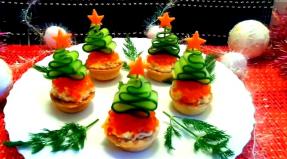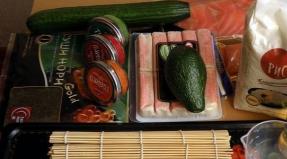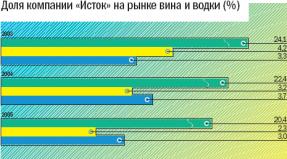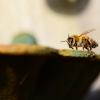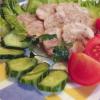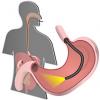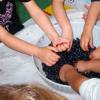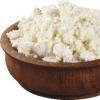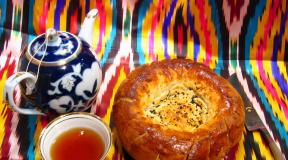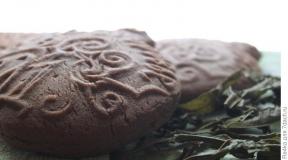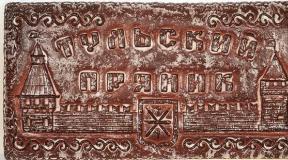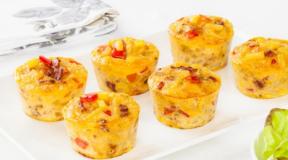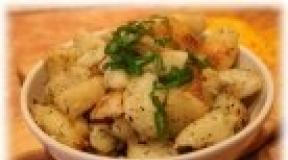Medical experiences at home. Experiments at home in chemistry and physics
Who in childhood did not believe in miracles? To have fun and informative time with your baby, you can try to carry out experiments from entertaining chemistry. They are safe, fun and educational. These experiments will allow you to answer many children's "why" and arouse interest in science and knowledge of the world around. And today I want to tell you what experiences for children at home can be organized for parents.
Pharaoh's snake

This experience is based on the volume expansion of the reagents being mixed. In the process of burning, they transform and, wriggling, resemble a snake. The experiment got its name thanks to the biblical miracle when Moses, who came to Pharaoh with a request, turned his rod into a snake.
The experience requires the following ingredients:
- ordinary sand;
- ethanol;
- crushed sugar;
- baking soda.
We saturate the sand with alcohol, after that we form a small slide from it and make a depression at the top. After that, mix a small spoonful of powdered sugar and a pinch of baking soda, then pour everything into an impromptu "crater". We set fire to our volcano, the alcohol in the sand starts to burn out, and black balls are formed. They are a decomposition product of soda and caramelized sugar.
After all the alcohol has burned out, the sand slide turns black and a wriggling "black pharaoh snake" is formed. This experience looks more impressive with the use of real reagents and strong acids, which can only be used in a chemical laboratory.
You can do a little easier and get a calcium gluconate tablet at the pharmacy. Set it on fire at home, the effect will be almost the same, only the "snake" will quickly collapse.
Magic lamp

In stores, you can often see lamps, inside of which a beautifully illuminated liquid moves and shimmers. Such lamps were invented in the early 60s. They work on the basis of paraffin and oil. At the bottom of the device there is a built-in conventional incandescent lamp that heats up the falling molten wax. Part of it reaches the top and falls, the other part heats up and rises, thus we see a kind of "dance" of paraffin inside the container.
In order to carry out a similar experience at home with a child, we need:
- any juice;
- vegetable oil;
- pills - effervescent;
- beautiful capacity.
We take a container and fill it with juice more than half. Top up with vegetable oil and throw in an effervescent tablet. It starts to "work", bubbles rising from the bottom of the glass capture the juice and form a beautiful bubbling in the oil layer. Then the bubbles reaching the edge of the glass burst, and the juice goes down. It turns out a kind of "cycle" of juice in a glass. Such magic lamps are absolutely harmless, unlike paraffin lamps, which a child can accidentally break and burn.
Ball and orange: experience for toddlers

What happens to a balloon if you drop orange or lemon juice on it? It will burst as soon as the citrus droplets touch it. And the orange can then be eaten with the baby. It is very entertaining and fun. For the experiment, we need a couple of balloons and citrus. We inflate them and let the baby drip fruit juice on each and see what happens.
Why is the balloon bursting? It's all about a special chemical - limonene. It is found in citrus fruits and is often used in the cosmetics industry. When the juice contacts the rubber of the balloon, a reaction occurs, limonene dissolves the rubber and the balloon bursts.
Sweet glass
Amazing things can be made from caramelized sugar. In the early days of cinematography, most fighting scenes used this edible sweet glass. This is because it is less traumatic for the actors when filming and is inexpensive. Its fragments can then be collected, melted and made props for the film.
Many in childhood made sugar cockerels or butter fondant; glass should be made according to the same principle. Pour water into a saucepan, heat it up a little, the water should not be cold. After that, pour granulated sugar there and bring to a boil. When the liquid starts to boil, cook until the mass gradually thickens and bubbles heavily. The melted sugar in the container should turn into a viscous caramel, which, if immersed in cold water, will turn into glass.
Pour the prepared liquid onto a baking sheet prepared and greased with vegetable oil, cool and the sweet glass is ready.
During the cooking process, you can add dye to it and mold it into any interesting shape, and then treat and surprise everyone around.
Philosopher's nail

This entertaining experience is based on the principle of iron copper plating. Named by analogy with a substance that could, according to legend, turn everything into gold, and was called the Philosopher's Stone. To conduct the experiment, we will need:
- iron nail;
- a fourth of a glass of acetic acid;
- food salt;
- soda;
- a piece of copper wire;
- glass container.
We take a glass jar and pour acid, salt there and stir well. Be careful, vinegar has a strong, unpleasant odor. It can burn the baby's delicate airways. Then we put a copper wire in the resulting solution for 10-15 minutes, after a while we lower the iron nail previously cleaned with soda into the solution. After a while, we can see that copper sputtering has appeared on it, and the wire has become shiny as new. How could this happen?
Copper reacts with acetic acid, a copper salt is formed, then copper ions on the surface of the nail exchange places with iron ions and form a coating on its surface. And in the solution, the concentration of iron salts increases.
Copper coins are not suitable for the experiment, since this metal itself is very soft, and to make money stronger, its alloys with brass and aluminum are used.
Copper products do not rust over time, they are covered with a special green bloom - patina, which prevents it from further corrosion.
DIY soap bubbles
Who didn't like blowing bubbles as a child? How beautifully they shimmer and burst merrily. You can just buy them at the store, but it will be much more interesting to create your own solution with your child and then blow bubbles.
It should be said right away that the usual mixture of laundry soap and water will not work. Bubbles are obtained from it, which quickly disappear and are poorly blown out. The most affordable way to prepare such a substance is to mix two glasses of water with a glass of dish detergent. If you add sugar to the solution, the bubbles become more durable. They will fly for a long time and will not burst. And the huge bubbles, which can be seen on stage by professional artists, are obtained by mixing glycerin, water and detergent.
For beauty and mood, you can mix food paint into the solution. Then the bubbles will glow beautifully in the sun. You can create several different solutions and use them one at a time with your child. It is interesting to experiment with color and create your own new shade of soap bubbles.
You can also try mixing soapy water with other substances and see how they affect the bubbles. Maybe you will invent and patent a new kind of your own.
Spy ink

This legendary invisible ink. What are they made of? There are so many spy films and interesting intellectual investigations now. You can invite your child to play a little undercover agents.
The point of this ink is that it cannot be seen on paper with the naked eye. Only by applying a special effect, for example, heating or chemical reagents, can the secret message be seen. Unfortunately, most of the recipes for making them are ineffective and these inks leave marks.
We will make special ones that are difficult to see without special detection. For this you will need:
- water;
- a spoon;
- baking soda;
- any heat source;
- a stick with cotton at the end.
Pour warm liquid into any container, then, stirring, pour baking soda there until it stops dissolving, i.e. the mixture will reach a high concentration. We put a stick with cotton on the end there and write something on paper with it. Let's wait until it dries, then bring the sheet to a lighted candle or gas stove. After a while, you can see how the yellow letters of the written word appear on the paper. Make sure that the leaf does not catch fire during the development of the letters.
Fireproof money
This is a well-known and old experiment. For him you will need:
- water;
- alcohol;
- salt.
Take a deep glass container and pour water into it, then add alcohol and salt, stir well to dissolve all the ingredients. For setting fire, you can take ordinary pieces of paper, if not a pity, then you can take a bill. Just take a small denomination, otherwise something may go wrong in the experience and the money will be spoiled.
Put strips of paper or money in a water-salt solution, after a while they can be removed from the liquid and set on fire. You can see that the entire bill is engulfed in flame, but it does not ignite. This effect is explained by the fact that the alcohol in the solution evaporates, and the wet paper itself does not ignite.
Wish-fulfilling stone

The process of growing crystals is very exciting but time consuming. However, what you get as a result will be worth the time. The most popular is the creation of crystals from table salt or sugar.
Consider growing a "stone of desires" from refined sugar. For this you will need:
- drinking water;
- granulated sugar;
- paper sheet;
- thin wooden stick;
- small container and glass.
First, let's make a blank. To do this, we need to prepare a sugar mixture. Pour some water and sugar into a small container. Let's wait until the mixture boils and boil it until a syrupy state is formed. Then we lower the wooden stick there and sprinkle it with sugar, this must be done evenly, in this case the resulting crystal will become more beautiful and even. Leave the base for the crystal overnight to dry and harden.
Let's start preparing a syrup solution. Pour water into a large container and add sugar to it, stirring slowly. Then, when the mixture boils, cook it until it becomes a viscous syrup. Remove from heat and let cool.
Cut out paper mugs and attach them to the end of a wooden stick. It will become the lid on which the crystal stick is attached. We fill the glass with a solution and lower the workpiece there. We wait for a week, and the "stone of desires" is ready. If you put a dye in the syrup during cooking, then it will turn out to be even more beautiful.
The process of creating crystals from salt is somewhat simpler. Here you just need to monitor the mixture and change it periodically in order to increase the concentration.
First of all, we create a blank. Pour warm water into a glass container, and gradually stirring, pour in salt until it stops dissolving. We leave the container for a day. After this time, you can find many small crystals in the glass, choose the largest one and tie it on a string. Make a new saline solution and put the crystal in there, you cannot let it touch the bottom or the edges of the glass. This can lead to unwanted deformations.
After a couple of days, you can see that he has grown up. The more often you change the mixture to increase the salt concentration, the faster you can grow your Wishstone.
Glowing tomato

This experiment should be strictly supervised by adults, since harmful substances are used to conduct it. The glowing tomato, which will be created in the course of this experiment, is absolutely forbidden to eat, it can lead to death or severe poisoning. We need:
- regular tomato;
- syringe;
- sulfur matter from matches;
- bleach;
- hydrogen peroxide.
We take a small container, put there the previously prepared match sulfur and pour in the bleach. We leave all this for a while, after which we draw the mixture into a syringe and inject it into the tomato from different sides, so that it glows evenly. To start the chemical process, hydrogen peroxide is needed, which we introduce through the trail from the stem on top. We turn off the light in the room, and we can enjoy the process.
An egg in vinegar: a very simple experience
It is a simple and interesting common acetic acid. For its implementation, you will need a boiled chicken egg and vinegar. Take a transparent glass container and dip the egg in the shell there, then fill it to the top with acetic acid. You can see how bubbles rise from its surface, this is a chemical reaction. After three days, we can observe that the shell has become soft, and the egg is elastic, like a ball. If you point a flashlight at it, you can see that it glows. It is not recommended to experiment with a raw egg, as the soft shell may break when squeezed.
DIY slime from PVA

This is a fairly common strange toy in our childhood. It is quite difficult to find it nowadays. Let's try to make a slime at home. Its classic color is green, but you can use whichever you like. Try mixing several shades and creating your own unique color.
To conduct an experiment, we need:
- glass jar;
- several small glasses;
- dye;
- PVA glue;
- regular starch.
Let's prepare three identical glasses with solutions, which we will mix. Pour PVA glue into the first, water into the second, and dilute starch in the third. First, pour water into a jar, then add glue and dye, stir everything thoroughly and then add starch. The mixture must be stirred quickly so that it does not thicken, and you can play with the ready-made slime.
How to quickly inflate a balloon
Soon a holiday and you need to inflate a lot of balloons? What to do? This unusual experience will help make the task easier. For it we need a rubber ball, acetic acid and regular baking soda. It must be carried out carefully in the presence of adults.
Put a pinch of baking soda in a balloon and place it on the neck of the acetic acid bottle to prevent the baking soda from spilling out, straighten the balloon and let its contents fall into the vinegar. You will see how the chemical reaction will take place, it will begin to foam, giving off carbon dioxide and inflating the ball.
That's all for today. Do not forget that it is better to carry out experiments for children at home under supervision, it will be both safer and more interesting. Until next time!
Friends, good afternoon! Agree, how sometimes it is interesting to surprise our crumbs! They have such a funny reaction to. It shows that they are ready to learn, ready to absorb new material. The whole world opens up at this moment in front of them and for them! And we, parents, act as real wizards with a hat, from which we “pull out” something amazingly interesting, new and very important!
What are we going to get out of the "magic" hat today? We have 25 experimental experiments there for children and adults... They will be prepared for babies of different ages in order to interest them and involve them in the process. Some can be carried out without any preparation, with the help of handy tools that each of us has at home. For others, we will buy some materials with you so that everything goes smoothly for us. Well? I wish all of us good luck and go!
Today will be a real holiday! And in the program we have:
So let's decorate the holiday by preparing an experiment for a birthday, New Year, 8 March, etc.
Ice soap bubbles
What do you think will happen if simple the bubbles that the baby is in 4 years so loves to inflate, run after them and burst them, inflate in the cold. Or rather, right into the snowdrift.
I give a hint:
- they will burst at once!
- take off and fly away!
- freeze!
Whatever you choose, I say right away, it will surprise you! Can you imagine what will happen to the little one ?!
But in slow motion - it's just a fairy tale!
Complicating the question. Is it possible to repeat the experiment in the summer in order to get a similar option?
Choose answers:
- Yes. But you need ice from the refrigerator.
You know, even though I really want to tell you everything, but that's exactly what I will not do! Let there be at least one surprise for you!
Paper against water

A real one awaits us experiment... Is it possible for paper to defeat water? This is a challenge to everyone who plays Rock-Paper-Scissors!
What we need:
- Paper;
- Water in a glass.
Cover the glass. It would be nice if its edges were a little damp, then the paper will stick. Turn the glass over carefully ... No water leaks!
Inflating the balls without breathing?

We have already carried out chemical baby experiences. Remember, there the very first room for very small crumbs was a room with vinegar and soda. So, let's continue! And we use energy, or rather, air, which is released during the reaction for peaceful inflating purposes.
Ingredients:
- Soda;
- Plastic bottle;
- Vinegar;
- Ball.
Pour soda into a bottle and pour 1/3 of vinegar. Shake lightly and quickly pull the ball over the neck. When it is inflated, bandage and remove from the bottle.
A small experience can show such an experience even in kindergarten.
Rain from a cloud

We need:
- Bank of water;
- Shaving foam;
- Food coloring (any color, several colors are possible).
We make a cloud of foam. Big and beautiful cloud! Leave it to the very best cloud maker, your child 5 years... He will definitely make her real!
 photo author
photo author
It remains only to distribute the dye over the cloud, and ... drip-drip! Rain is coming!

Rainbow

Maybe, physics the children are still unknown. But after they make the Rainbow, they will definitely love this science!
- Deep transparent container with water;
- Mirror;
- Flashlight;
- Paper.
Place a mirror at the bottom of the container. At a slight angle, we shine a flashlight on the mirror. It remains to catch the Rainbow on paper.
It's even easier to use a disc and flashlight.
Crystals

There is a similar, only ready-made game. But our experience interesting the fact that we ourselves, from the very beginning, will grow crystals from salt in water. To do this, take a thread or wire. And let us keep it for several days in such salty water, where the salt can no longer dissolve, but accumulates in a layer on the wire.
Can be grown from sugar
Lava bank
If you add oil to a jar of water, it will all collect on top. It can be tinted with food coloring. But in order for the bright oil to sink to the bottom, you need to sprinkle salt on top of it. Then the oil will settle. But not for long. The salt will gradually dissolve and release the beautiful droplets of oil. Colored oil rises gradually, as if a mysterious volcano is bubbling inside the jar.
Eruption

For toddlers 7 years it will be very interesting to blow up, demolish, destroy something. In a word, the real element is for them. and therefore we create a real, exploding volcano!
We sculpt from plasticine or from cardboard we make a "mountain". We put a jar inside it. Yes, so that its neck fits to the "crater". We fill a jar of soda, dye, warm water and ... vinegar. And everything will start to “explode, the lava will rush up and flood everything around!
A hole in the package - it doesn't matter

This is what convinces book of scientific experiments for children and adults Dmitry Mokhov "Simple Science". And we can verify this statement ourselves! First, fill the bag with water. and then we will pierce it. But what we pierced with (a pencil, a toothpick or a pin) will not be removed. Will we run out a lot of water? Checking!
Water that does not spill

Only this kind of water still needs to be made.
We take water, paint and starch (as much as water) and mix. As a result - ordinary water. Only you won't be able to spill it!
Slippery Egg

In order for the egg to really crawl into the neck of the bottle, it is worth setting fire to a piece of paper and throwing it into the bottle. Cover the hole with an egg. When the fire is extinguished, the egg will slip inside.
Snow in summer

This trick is especially interesting to repeat during the warmer months. Remove the contents of the diapers and wet them with water. Everything! The snow is ready! Nowadays, such snow is easy to find in children's toys in stores. Ask the seller for artificial snow. And there is no need to spoil the diapers.
Moving snakes
To make a moving figure, we need:
- Sand;
- Alcohol;
- Sugar;
- Soda;
- Fire.
Pour alcohol on a pile of sand and let it soak. Then pour sugar and soda on top and set it on fire! Oh what funny this experiment! Kids and adults will love what the revived snake does!
Of course, this is for older children. And it looks pretty scary!
Battery Train

The copper wire, which we twist in an even spiral, will become our tunnel. How? Let's connect its edges, forming a round tunnel. But before that we "run" the battery inside, just attach neodymium magnets to its edges. And consider that you have invented a perpetual motion machine! The locomotive drove off by itself.
Swing from a candle

To light both ends of the candle, you need to clean the bottom of it up to the wick from wax. Heat the needle over the fire and pierce the candle in the middle with it. Place the candle on 2 glasses so that it rests on the needle. Burn the edges and rock slightly. Further, the candle itself will swing.
Elephant Tooth Paste
The elephant needs more and more. We do it! Dissolve potassium permanganate in water. Add liquid soap. The final ingredient - hydrogen peroxide - turns our mixture into giant elephant paste!
Let's drink a candle
For greater effect, paint the water in a bright color. We put a candle in the middle of the saucer. We set it on fire and cover with a transparent container. Pour water into a saucer. At first, the water will be around the container, but then everything will be soaked inward, to the candle.
Oxygen is burned, the pressure inside the glass decreases and
Real chameleon

What will help our chameleon change color? Cunning! Give your little one 6 years decorate a plastic plate in different colors. And cut out the chameleon figure yourself on another plate, similar in shape and size. It remains not to firmly connect both cymbals in the middle so that the upper one, with the cut-out figure, can rotate. Then the color of the animal will always change.
Light up the rainbow

Place the Skittles on a plate in a circle. Pour water into the plate. it remains to wait a bit and we get a rainbow!
Smoke rings

Cut off the bottom of the plastic bottle. And pull the edge of the cut balloon to get a membrane, as in the photo. Light the incense stick and place it in the bottle. Close the lid. When there is continuous smoke in the can, unscrew the lid and tap on the membrane. The smoke will come out in rings.
Multicolored liquid
To make everything look more spectacular, paint the liquid in different colors. Make 2-3 pieces of colored water. pour water of the same color on the bottom of the can. Then carefully pour vegetable oil along the wall from different sides. Pour water mixed with alcohol on top of it.
Egg without shell

Put a raw egg in vinegar for at least a day, some say for a week. And the focus is ready! Egg without hard shell.
The shell of an egg contains calcium in abundance. Vinegar reacts actively with calcium and gradually dissolves it. As a result, the egg is covered with a film, but completely without the shell. It feels like an elastic ball to the touch.
And the egg will also be larger than its original size, as it will absorb a little vinegar.
Dancing men
It's time to misbehave! Mix 2 parts of starch with 1 part of water. Put a bowl of starchy liquid on the speakers and turn up the bass louder!
Coloring the ice

We decorate ice figures of different shapes using food paint mixed with water and salt. The salt eats away at the ice and seeps deep into interesting passages. A great idea for color therapy.
Launching paper rockets
We release the tea bags from the tea by cutting off the top. We set it on fire! Warm air lifts the package!
There are so many experiences that you definitely have something to do with children, just choose! And don't forget to come back for a new article, which you will learn about if you subscribe! Invite your friends to visit us! And that's all for today! Bye!
Experiments at home are a great way to introduce children to the basics of physics and chemistry, and to make it easier to understand complex abstract laws and terms through visual demonstrations. Moreover, to carry out them, you do not need to acquire expensive reagents or special equipment. After all, without hesitation, every day we conduct experiments at home - from adding slaked soda to the dough to connecting batteries to a flashlight. Read on to find out how easy, simple, and safe it is to do interesting experiments.
Chemical experiments at home
The image of a professor with a glass flask and singed eyebrows immediately appears in your head? Don't worry, our home chemistry experiments are completely safe, interesting and rewarding. Thanks to them, the child will easily remember what exo- and endothermic reactions are and what is the difference between them.
So let's make hatching dinosaur eggs that can be used as bathroom bombs.
For experience you need:
- small figures of dinosaurs;
- baking soda;
- vegetable oil;
- lemon acid;
- food coloring or liquid watercolor paints.
Experiment procedure
- Put ½ cup baking soda in a small bowl and add about ¼ teaspoon. liquid paints (or dissolve 1-2 drops of food coloring in ¼ tsp water), stir the baking soda with your fingers to get a uniform color.
- Add 1 tbsp. l. citric acid. Stir dry ingredients thoroughly.
- Add 1 tsp. vegetable oil.
- You should have a crumbly dough that barely sticks together when pressed. If it doesn't want to stick together at all, then slowly add ¼ tsp. oil until you achieve the desired consistency.
- Now take the dinosaur figurine and stick it with egg-shaped dough. It will be very fragile at first, so it should be set aside overnight (minimum 10 hours) to harden.
- Then you can start a fun experiment: fill the bathroom with water and throw an egg into it. It will hiss violently as it dissolves in the water. It will be cold when touched, as it is an endothermic reaction between acid and alkali, absorbing heat from the environment.

Please note that the bathroom may become slippery due to the addition of oil.
Elephant toothpaste
Experiments at home, the result of which can be felt and touched, are very popular with children. This includes this fun project, which ends with a lot of dense, lush colored foam.
To carry it out you will need:
- protective glasses for the child;
- dry active yeast;
- warm water;
- hydrogen peroxide 6%;
- dishwashing detergent or liquid soap (not antibacterial);
- funnel;
- plastic sequins (always non-metallic);
- food colorings;
- a bottle of 0.5 liters (it is best to take a bottle with a wide bottom, for greater stability, but a regular plastic one is also suitable).

The experiment itself is very simple:
- 1 tsp dry yeast, dilute in 2 tbsp. l. warm water.
- In a bottle placed in a sink or dish with high sides, pour ½ cup hydrogen peroxide, a drop of dye, glitter and some dishwashing liquid (a few taps on the dispenser).
- Insert the funnel and pour in the yeast. The reaction will start immediately, so act quickly.
Yeast acts as a catalyst and accelerates the release of hydrogen peroxide, and when the gas interacts with soap, it creates a huge amount of foam. This is an exothermic reaction, with the release of heat, so if you touch the bottle after the "eruption" stops, it will be warm. Since the hydrogen immediately evaporates, there is just a lather to play with.
Experiments in physics at home
Did you know that lemon can be used as a battery? True, very weak. Experiments at home with citrus fruits will demonstrate to children how the battery and the closed electrical circuit work.
For the experiment, you will need:
- lemons - 4 pcs.;
- galvanized nails - 4 pcs.;
- small pieces of copper (you can take coins) - 4 pcs.;
- alligator clips with small wires (about 20 cm) - 5 pcs.;
- small light bulb or flashlight - 1 pc.

Let there be light
Here's how to run the experiment:
- Roll on a hard surface, then squeeze the lemons lightly to let the juice flow inside the skin.
- Insert one galvanized nail and one piece of copper into each lemon. Place them on the same line.
- Connect one end of the wire to a galvanized nail and the other to a piece of copper in another lemon. Repeat this step until all the fruits are connected together.
- When you're done, you should be left with one 1 nail and 1 piece of copper that are not connected to anything. Prepare your bulb, determine the polarity of the battery.
- Connect the remaining piece of copper (plus) and nail (minus) to the plus and minus of the flashlight. Thus, a string of connected lemons is a battery.
- Turn on a light bulb that will run on the energy of the fruit!
To repeat such experiments at home, potatoes are also suitable, especially green ones.
How it works? The citric acid in lemon reacts with two different metals, which causes the ions to move in one direction, creating an electric current. All chemical sources of electricity work according to this principle.
Summer fun
You don’t have to stay indoors to do Some experiments will work better outdoors and you don’t have to clean up when they’re done. These include interesting experiments at home with air bubbles, and not simple ones, but huge ones.

To make them you will need:
- 2 wooden sticks 50-100 cm long (depending on the age and height of the child);
- 2 metal screw-in lugs;
- 1 metal washer;
- 3 m of cotton cord;
- bucket with water;
- any detergent - for dishes, shampoo, liquid soap.
Here's how to do spectacular experiences for kids at home:
- Screw the metal ears into the ends of the sticks.
- Cut the cotton cord into two parts, 1 and 2 m long.You may not exactly adhere to these measurements, but it is important that a 1 to 2 ratio is maintained between them.
- Slide the washer over a long piece of rope so that it sags evenly in the center, and tie both ropes to the ears on the sticks, forming a loop.
- Stir a small amount of detergent in a bucket of water.
- By gently dipping the loop on the sticks into the liquid, start blowing out giant bubbles. To separate them from each other, gently bring the ends of the two sticks together.

What is the scientific component of this experience? Explain to the children that bubbles are held together by surface tension - the force of attraction that holds the molecules of any liquid together. Its action is manifested in the fact that poured water is collected in drops, which tend to acquire a spherical shape, as the most compact of all existing in nature, or that water, when poured, is collected in cylindrical streams. At the bubble, a layer of liquid molecules on both sides is clamped by soap molecules, which increase its surface tension when distributed over the bubble surface, and prevent it from quickly evaporating. While the sticks are kept open, the water is held in the form of a cylinder, as soon as they are closed, it tends to a spherical shape.
Such experiments at home can be done with children.
Home chemists-scientists believe that the most useful property of detergents is the content of surfactants (surfactants). Surfactants significantly reduce the electrostatic voltage between the particles of substances and break down conglomerates. This property makes it easier to clean the clothes. In this article, there are chemical reactions that you can repeat with household chemicals, because with the help of surfactants you can not only remove dirt, but also perform spectacular experiments.
Experience one: a foamy volcano in a bank
It is very easy to carry out this interesting experiment at home. For him you will need:
hydroperite, or (the higher the concentration of the solution, the more intense the reaction will be and the more spectacular the eruption of the "volcano"; therefore, it is better to buy tablets in a pharmacy and immediately before use dilute them in a small volume in a ratio of 1/1 (you get a 50% solution - this is excellent concentration);
gel detergent for dishes (prepare about 50 ml of an aqueous solution);
dye.
Now you need to get an effective catalyst - ammonia. Add the ammonia liquid carefully and drop by drop until it is completely dissolved.
 Copper sulfate crystals
Copper sulfate crystals
Consider the formula:
CuSO₄ + 6NH₃ + 2H₂O = (OH) ₂ (copper ammonia) + (NH₄) ₂SO₄
Peroxide decomposition reaction:
2H₂O₂ → 2H₂O + O₂
Making a volcano: mix ammonia with a cleaning solution in a jar or wide-necked flask. Then quickly pour in the hydroperite solution. The "eruption" can be very strong - it is better to substitute some kind of container under the volcano flask.
Experiment two: reaction of acid and sodium salts
Perhaps the most common compound found in every home is baking soda. It reacts with acid to create new salt, water and carbon dioxide. The latter can be detected by hissing and bubbles at the reaction site.

Experience three: floating soap bubbles
This is a very simple baking soda experience. You will need:
- wide bottom aquarium;
- baking soda (150-200 grams);
- (6-9% solution);
- soap bubbles (to make your own, mix water, dishwashing detergent, and glycerin);
Spread soda evenly over the bottom of the aquarium and fill it with acetic acid. The result is carbon dioxide. It is heavier than air and therefore settles at the bottom of the glass box. To determine if there is CO₂ there, lower the lighted match to the bottom - it will instantly go out in carbon dioxide.
NaHCO₃ + CH₃COOH → CH₃COONa + H₂O + CO₂
Now you need to blow bubbles into the container. They will slowly move along a horizontal line (the boundary of contact between carbon dioxide and air, invisible to the eye, as if floating in an aquarium).
Experience four: reaction of soda and acid 2.0
For experience you will need:
- different types of non-hygroscopic foods (for example, gummies).
- a glass of diluted baking soda (one tablespoon);
- a glass with a solution of acetic or any other available acid (malic,).
Cut the pieces of marmalade with a sharp knife into strips 1-3 cm long and place for processing in a glass with soda solution. Wait 10 minutes and then move the pieces to another glass (with an acidic solution).
The ribbons will become overgrown with bubbles of the resulting carbon dioxide and float upward. On the surface, the bubbles will evaporate, the lifting force of the gas will disappear, and the marmalade ribbons will drown, again become overgrown with bubbles, and so on until the reagents in the container run out.
Fifth experiment: properties of alkali and litmus paper
Most detergents contain caustic soda, the most common alkali. It is possible to reveal its presence in a solution of a detergent in this elementary experiment. At home, a young enthusiast will easily conduct it on his own:
- take a strip of litmus paper;
- dissolve a little liquid soap in water;
- dip litmus into soapy liquid;
- wait until the indicator turns blue, which will indicate an alkaline reaction of the solution.
Click to find out what other experiments on the determination of the acidity of the environment can be carried out from the materials at hand.
Experiment six: colored explosions in milk
The experience is based on the properties of the interaction of fats and surfactants. Fat molecules have a special, dual structure: hydrophilic (interacting, dissociating with water) and hydrophobic (water-insoluble "tail" of a polyatomic compound) end of the molecule.
- Pour milk into a wide container of shallow depth ("canvas" on which a color explosion will be visible). Milk is a suspension, a suspension of fatty molecules in water.
- Use a pipette to add a few drops of the water-soluble liquid dye to the milk container. You can add different dyes to different places of the container and make a multicolored explosion.
- Then you need to soak a cotton swab in liquid detergent and touch the surface of the milk. The white "canvas" of milk turns into a moving palette with colors that move in the liquid like spirals and twist into bizarre bends.
This phenomenon is based on the ability of surfactants to fragment (divide into sections) a film of fat molecules on the surface of a liquid. Fat molecules, repelling by their hydrophobic "tails", migrate in the milky suspension, and with them the partially undissolved paint.
A remake of Ghostbusters is coming out very soon, and this is a great excuse to revisit the old film and explore non-Newtonian fluids. One of the heroes of the film, the silly ghost Lizun, is a good image for visualization. This is a character who loves to eat very much, and he also knows how to penetrate walls.
We need:
- potato,
- tonic.
What do we do
Cut the potatoes very finely (you can grind them in a food processor) and fill them with hot water. After 10-15 minutes, drain the water through a sieve into a clean bowl and set aside. A sediment will appear at the bottom - starch. Drain the water, the starch will remain in the bowl. Basically, you already have a non-Newtonian fluid. You can play with it and watch how it hardens under your hands, and itself becomes liquid. You can also add food coloring for a vibrant color.
Trevor Cox / Flickr.comNow let's add some magic.
The starch must be dried (left for a couple of days). And then add tonic to it and make a kind of dough that is easy to take in your hand. It will retain its consistency in the palms, and if you stop and stop kneading it, it will start to spread.
If you turn on the ultraviolet lamp, then you and your child will see how the dough starts to glow. This is due to the quinine in the tonic. It looks magical: a radiant substance that behaves as if it violates all the laws of physics.
2. Get superpowers
Comic book characters are especially popular now, so your child will love to feel like a powerful Magneto who knows how to manipulate metals.
We need:
- toner for the printer,
- magnet,
- vegetable oil.
What do we do
From the very beginning, get ready for the fact that after this experiment you will need a lot of napkins or rags - it will be quite dirty.
Pour about 50 ml of laser toner into a small container. Add two tablespoons of vegetable oil and mix very well. Done - you have a liquid in your hands that will react to a magnet.
 Jerald San Hose / Flickr.com
Jerald San Hose / Flickr.com You can attach a magnet to the container and watch how the liquid literally sticks to the wall, forming a funny "hedgehog". It will be even more interesting if you find a board on which it is not a pity to pour a little black mixture, and invite your child to use a magnet to control the drop of toner.
3. Turn milk into a cow
Encourage the child to solidify the liquid without freezing it. This is a very simple and impressive experience, however, to get the result, you have to wait a couple of days. But what an effect!
We need:
- Cup ,
- vinegar.
What do we do
We heat a glass of milk in a microwave oven or on a stove. Do not boil. Then you need to add a tablespoon of vinegar to it. And now we start getting in the way. We actively move the spoon in the glass to see how the white clots appear. This is casein, a protein found in milk.
When there are many clots, drain the mixture through a sieve. Everything that remains in the colander must be shaken, and then put on a paper towel and dry a little. Then start kneading the material with your hands. It will look like dough or clay. At this stage, you can add food coloring or glitter to make the white mass brighter and more interesting for the baby.
Invite your child to mold something from this material - a figurine of an animal (for example, a cow) or some other object. But you can just put the mass in a plastic mold. Leave to dry for a day or two.
When the mass is dry, you will have a figurine made of a very hard hypoallergenic material. This "homemade plastic" was used until the 1930s. Casein was used to make jewelry, accessories, buttons.
4. Control the snakes
Reacting vinegar and baking soda is one of the most boring experiences imaginable. "Volcanoes" and "pops" will not be of interest to modern children. But you can offer the child to become a "lord of snakes" and show how the acid and alkali react after all.
We need:
- packing of jelly worms,
- soda,
- vinegar.
What do we do
We take two large transparent glasses. Pour water into one and add soda. We mix. We open the package of jelly worms. It is better to cut each of them lengthwise, to make it thinner. Then the experience will be more spectacular.
Thin worms should be put in a mixture of water and soda and mixed. Set aside for 5 minutes.
Pour vinegar into another glass. And now we add to this vessel the worms that have been in a glass of soda. Due to the soda, bubbles will be visible on their surface. So the reaction is underway. The more worms you add to the glass, the more gas will be released. And after a while, the bubbles will lift the worms to the surface. Add more baking soda - the reaction will be more active and the worms themselves will begin to crawl out of the glass. Cool!
5. Make a hologram like in "Star Wars"
Of course, it is difficult to create a real hologram at home. But its semblance is quite real and not even very difficult. You will learn how to use the properties of light and turn 2D images into 3D images.
We need:
- smartphone,
- CD box,
- stationery knife,
- Scotch,
- paper,
- pencil.
What do we do
You need to draw a trapezoid on paper. The drawing can be seen in the photo: the length of the lower side of the trapezoid is 6 cm, the upper side is 1 cm.
 BoredPanda.com
BoredPanda.com Carefully cut the trapezoid out of the paper and take out the CD case. We need a transparent part of it. Attach the pattern to the plastic and use a utility knife to cut a trapezoid out of the plastic. Repeat three more times - we need four identical transparent elements.
Now they need to be glued together with tape so that it looks like a funnel or a truncated pyramid.
Take your smartphone and run one of the such videos... Place the plastic pyramid, narrow side down, in the center of the screen. Inside you will see a "hologram".
 Giphy.com
Giphy.com You can play a video with characters from Star Wars and, for example, recreate famous recording of Princess Leia or admire own miniature BB-8.
6. Get out of the water dry
Every child can build a sand castle on the seashore. How about lining it up under water? Along the way, you can learn the concept of "hydrophobic".
We need:
- colored sand for aquariums (you can take ordinary sand, but it needs to be washed and dried),
- hydrophobic shoe spray.
What do we do
Gently pour the sand onto a large plate or baking sheet. Apply a hydrophobic spray to it. We do this very carefully: spray, mix, repeat several times. The task is simple - to make sure that each grain of sand is enveloped in a protective layer.
 University of Exeter / Flickr.com
University of Exeter / Flickr.com When the sand is dry, collect it in a bottle or bag. Get a large container for water (such as a wide-mouth jar or aquarium). Show your child how hydrophobic sand works. If you pour it in a thin stream into water, it sinks to the bottom, but remains dry. This is easy to check: have the baby take some sand from the bottom of the container. As soon as the sand rises out of the water, it will crumble in the palm of your hand.
7. Keeping information classified is better than James Bond
Writing secret messages with lemon juice is a thing of the past. There is another way to get invisible ink, which also allows you to learn a little more about the reaction of iodine and starch.
We need:
- paper,
- brush.
What do we do
First, cook the rice. The porridge can be eaten later, but we need a decoction - there is a lot of starch in it. Dip a brush into it and write a secret message on paper, such as "I know who ate all the cookies yesterday." Wait for the paper to dry. The starchy letters will be invisible. To decipher the message, you need to moisten another brush or cotton swab in a solution of iodine and water and run it over what was written. Due to a chemical reaction, blue letters will begin to appear on the paper. Voila!
